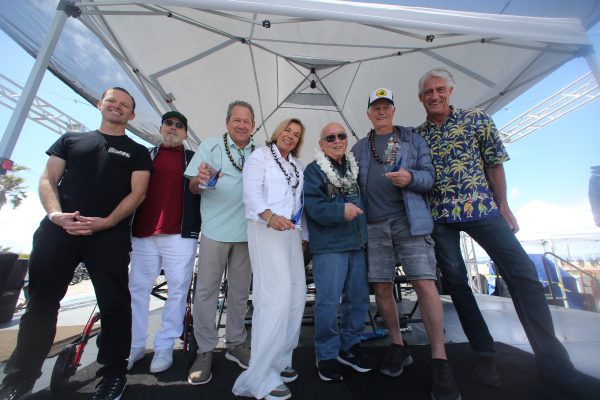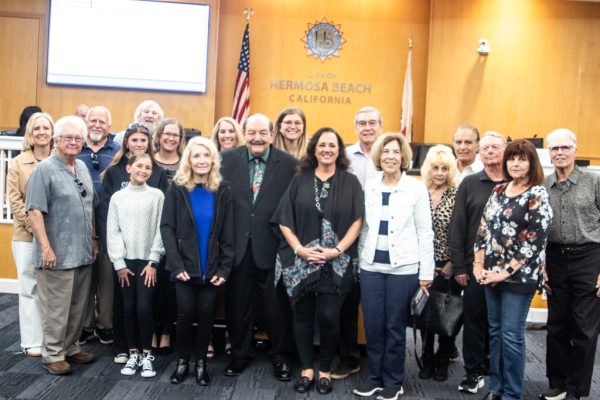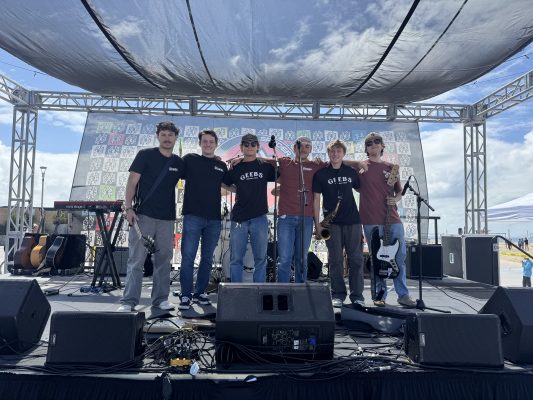
Editor’s note: The following is the first story in a series of stories about the
Three fundamental questions illustrate the difficulty facing Hermosa Beach voters who hope to understand the financial impact of E&B Resources’ proposal to drill for oil in the city’s uplands and tidelands.
Question: How much revenue will the city receive if the drilling proceeds?
Answer: $118 million to $270 million over the next 34 years
Question: How much will the school district receive?
Answer: $1.2 million to $2.2 million over 34 years.
Question: If voters deny E&B permission to drill, how much will it cost the city?
Answer: $22 million over 20 years.
These numbers are from the Executive Summary of the Hermosa Beach Oil Drilling and Recovery Cost Benefit Analysis written by Kosmont Companies.
But if those were the only dollar figures voters need to know, the report would not run 161 pages.
Drill down into those numbers and the answers become as slippery as the report’s subject, not because the report’s writers were evasive, but because they were exceedingly thorough. Independent of its primary purpose, Kosmont’s report offers a survey course in municipal finance.

(Suggestion to anyone hoping to read the entire report: Begin on page 103 with the glossary of acronyms and industry terms).
Chart 8.3 estimates the school district’s oil royalties at $3.52 million, or roughly $100,000 per year over the project’s 35 years. But table 16 on the following page shows the schools netting only $1.76 million or an average of $51,470 annually.
The reason is state funding to the district would be reduced by an amount equal to 50 percent of the oil royalties, the Kosmont report explains.
State legislation also dramatically impacts the city’s estimated $124 million in tidelands oil royalties.

How the city may spend those funds is dictated by the 1919 State Tidelands Grant to the city, the report states.
The grant reads, in part, “[Hermosa tidelands revenue] shall be used…solely for the establishment, improvement and conduct of a harbor….”
Updated language from the California State Lands Commission Public Trust Doctrine reads, ‘Uses of trust funds…are generally limited to those that are water dependent or related and include commerce, fisheries, and navigation, environmental preservation and recreation… They must be used to serve statewide, as opposed to purely local public purposes.”

The state has agreed to allow the city to treat 37 percent of the tidelands royalties as rent from E&B. But the Kosmont report offers no suggestions on how to spend the remaining 62.5 percent. The report does caution, “To the extent that a city is unable to find appropriate uses for Tidelands oil and gas revenues, a significant portion of such funds may be diverted to the state.”
Hermosa’s past experience with tidelands funds may offer some guidance.
In 1958, Shell Oil promised the city of Hermosa Beach $500,000 for the right to ask voters to reverse the city’s 1932 ban on oil drilling. The measure failed, but Shell made good on its promise.
“The money had to be used for harbors, fisheries or navigation, none of which Hermosa had,” Realtor Pat Anderson told Easy Reader in a 1973 interview. Anderson was a city councilman from 1960 to 1970.

“So we used the money to buy beach property on either side of the pier and with an additional $300,000 from the State Wildlife Conservation Board, we built the new pier. At the end of the pier we put a foghorn and said it was an aid to navigation to justify using the oil money.
“No one ever challenged us and we have the finest pier in the area,” Anderson said.
Restrictions also apply to the city’s spending of the estimated $104 million in uplands royalties it stands to receive if voters overturn the oil ban.
But unlike the state restrictions on tidelands royalties, the restrictions on upland royalties were self-imposed by Hermosa Beach voters.
In 1984, voters overturned the 1932 drilling ban in hopes of using oil royalties to purchase the abandoned Santa Fe Railroad right-of-way. Voters wanted the strip of land, which stretched from the north end to the south end of town, to be used as open space. Not trusting the council to use the funds for their intended purpose, the following language was added to the ballot measure: [Oil revenue will be used for] acquisition, maintenance and improvement of available excess school or other properties for open space and parkland purposes.”
(The city subsequently acquired the Santa Fe right-of-way with county funds and residents reinstated the ban on oil drilling in 1995).
Unless the city wants to use uplands oil money exclusively for open space, the Kosmont report states, this restriction will need to be removed by voters. City sources say they expect the issue to be put before voters on the same ballot that asks voters to lift the drilling ban.
The financial consequences of voters not approving E&B’s proposal are less complicated. The city is obligated to pay E&B $17.5 million if voters refuse to lift the ban on drilling. The city has $6 million set aside and would need to finance the $11.5 difference, at a cost of $1.1 million for 20 years, the Kosmont report states. The report lists a variety of vehicles for paying the debt, including a bond, a parcel tax or certificates of participation. Or the city could cuts its annual $30 million budget by approximately $850,000 a year for the next 20 years.
Arguably, Kosmont Report’s most surprising finding is that proximity to the proposed drilling site at Sixth Street and Valley Drive, may not significantly hurt property values.
Studies of Los Angeles area homes near oil drilling sites were “inconclusive,” a fact the report attributes to the “multitude of factors that influence buyer decisions.”
In their conclusion they wrote, “The authors consider a 0 to 10 percent reduction in property values possible for properties proximate to the project site.”
Report lowballs revenue, says E&B
E&B vice president of Health, Safety and the Enironment and Government Affairs Mike Finch said he is generally satisfied with Kosmont’s cost analysis, but believes the amount of oil and the royalties are underestimated.
Kosmont’s high estimate for tidelands and uplands proceeds to the city is $270 million over the 34 year life of the program. E&B puts the number at $450 million.
Kosmont’s high estimate for the schools is $2.2 million. E&B has estimated school royalties to be as high as $11 million.
Finch attributed the differences between Kosmont’s and E&B’s numbers to three factors. Kosmont did not include revenue from zones in the tidelands reservoir known as the Shist and Lower Del Amo layers because it lacked reports on those zones. But the Kosmont report acknowledges that oil in those zones could “could contain 34 percent of the reservoir volume.”
A second explanation for the difference, Finch said, deals with the recovery rate, defined as the percentage of total hydrocarbons in the reservoir that can be recovered.
Kosmont put the recovery rate at eight percent. E&B estimates it will be 15 to 20 percent.
Finch said E&B hopes to meet with the school board to discuss increasing the school district’s royalties.
He said the school district’s royalties were fixed at 20 cents a barrel, rather than as a percentage or revenue to protect the district in the event oil prices dropped. But since oil prices have steadily risen, a percentage of royalties would be more equitable, he said. As a measure of how controversial drilling has become, Finch said school board members have expressed reluctance even to meet with E&B to discuss an increase in royalties.
A third explanation for the projection differences, Finch said, is that Kosmont calculated revenue at $95 a barrel. E&B used $105 a barrel in its calculations.
Finch recognized that Kosmont’s report focused exclusively on costs and benefits to the city and school district. But he thought mention should have been made of the fact that if voters approve drilling, approximately 1,000 Hermosa property owners will receive an estimated $100 million for their mineral rights over the next 34 years. The Hermosa oil reservoir extends roughly from Pier Avenue south to the Redondo Beach border, and west from Valley Avenue to one mile out from the mean high tide line.
Finch also pointed out that E&B will investing as much as $100 million in upfront costs to launch the project. These include financing the move of the city maintenance yard and the city’s $17.5 million settlement with MacPherson Oil, which previously owned the rights to drill for oil in Hermosa. ER










